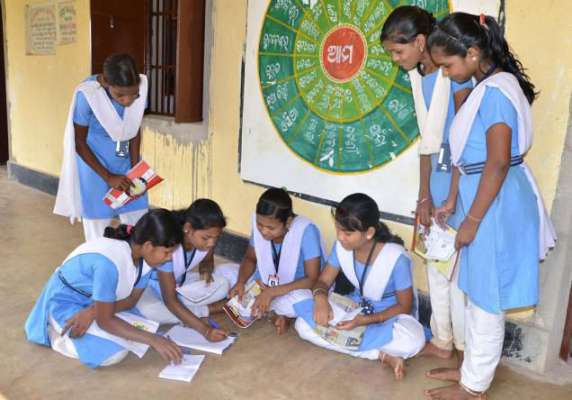Amarendra Das & V Santhakumar
Tribal communities constitute about 23 per cent of the population of Odisha and six out of 10 tribals in the state are poor. This is in contrast with four among scheduled castes, two among OBCs and one among other groups. One important reason for the economic backwardness of tribals is the lack of education. Only half the tribals in Odisha are literate. The rate varies widely across the 30 districts in the state. In Malkangiri, Koraput, Rayagada and Nabarangapur, less than four out of 10 tribals are literate. The figure dips further to three among females.
After the launch of Sarva Siksha Abhiyan, the enrolment of tribal children in primary schools increased. But they are unable to pursue higher education for several reasons. Official statewide data show that 36 per cent of children enrolled in Class I are tribals. But this share dips to 27 per cent in Class V, to 17 per cent in Class VIII, and to 13 per cent in Class XII. At graduate and postgraduate level courses, the share drops to about 3 per cent.
To promote the education of tribal children, the state and Union governments have implemented various schemes such as mother tongue based multilingual education (MLE) in primary schools, residential schools for SCs and STs for both boys and girls and special scholarships for tribal children.
Odisha has the most diverse tribal population compared with other Indian states. The state has 62 tribal communities and tribal children find learning in Odia challenging. In 2007-08 the state government introduced MLE in 10 Languages (Santhali, Munda, Koya, Kuvi, Kishan, Oram, Soura, Kui, Bonda and Juang). It was extended to 11 more tribal languages (Gadaba, Ho, Gondi, Paroja, Kharia, Didayi, Bhinjhal, Bhuiyan, Bhumia, Bhatra and Bhunjia) in 2012-13. Under MLE, tribal children are taught completely in their mother tongue in Class I, 80 per cent in class II, 60 per cent in class III and 50 per cent in class IV. They are taught Odia from class II and from Class V the medium of education is switched completely to Odia.
But MLE does not help even students in Class VIII to overcome the language barrier. Teachers who teach in Odia are, therefore, unable to reach out to the tribal children adequately. This is leading to poor learning among these children and they drop out of school.
Residential schools with Odia as the medium face an even greater challenge. Teachers at two Sevashram schools in Khordha district, for instance, said children there face difficulties learning in Odia. They feel the handicap of language impedes overall learning outcome in residential schools. The parents of most children at such schools are poor and cannot afford monthly/quarterly visits to their wards or even contact them over the telephone regularly. This leads to cultural alienation of tribal children.
These challenges may be addressed by adopting the following measures: MLE should be extended up to Class VIII; teachers handling classes for such students from Class IX should know both Odia and the tribal language to facilitate smooth transition; the local language and culture should receive importance in their learning. Residential schools should enrol children for classes IV to X only from within the panchayat in which the school is situated to help them stay in touch with parents; scarcity of qualified and trained teachers should be addressed by allowing tribal communities to nominate educated youths from among them to be trained and recruited in the residential schools and by training teachers in tribal language and culture before they join tribal residential schools (these teachers should not be transferred).
A similar, successful experiment to train teachers from indigenous communities is already under way in Brazil.
Das is an assistant professor with NISER, Bhubaneswar. Santhakumar is professor with Azim Premji University, Bangalore.
